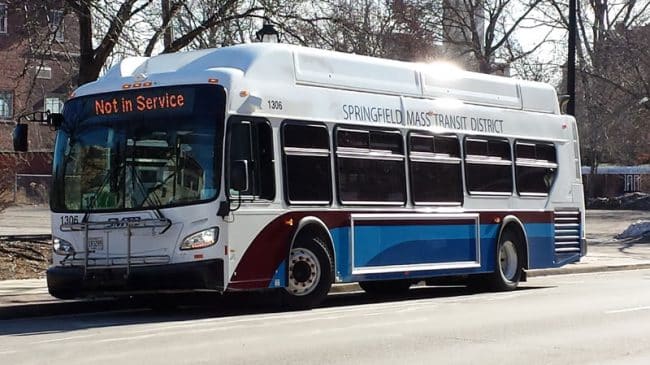Orange County has developed a solid transit network of more than 40 local bus routes and 10 intracounty and intercounty express bus routes. The bus service connects locations such as UC Irvine with Brea and links Orange County population centers such as Huntington Beach with outside job centers like downtown Los Angeles.
However, current express bus service has a major limitation – buses get stuck in the same traffic congestion drivers face. To make transit more effective, Orange County should develop a network of express lanes on freeways and managed arterials on streets.
On freeways, Orange County should expand its existing express bus service, which operates in the express lanes at 45 miles per hour or higher. While express lanes benefit drivers, their biggest beneficiaries may be transit users.
Buses use these lanes, at no cost, to guarantee riders reliable trips and on-time arrival. The county should consider converting all of its existing carpool lanes into an express lane network by increasing carpool requirements and charging single-occupant drivers tolls to use the lanes. The county could also fill vital gaps in the existing high-occupancy vehicle lanes network by expanding them on I-5 and on the 73.
On arterial streets, Orange County should develop bus-rapid transit service and a new type of roadway called a “managed arterial,” which would have several innovative features.
First, managed arterials provide buses and drivers with vital timesaving options for bypassing busy intersections.
They usually feature bridges or tunnels that allow buses and drivers to continue at full speed by going over or under congested stoplights. Drivers choose whether or not to pay 10 cents to 50 cents to skip the lights and delays at these intersections, while buses use these queue jumpers for free.
Second, managed arterials use smart, priority stoplights that are synced with buses to provide advanced green lights to them. This means buses do not have to stop and wait at less busy minor cross streets.
Speeding up bus trips in these ways can have major impacts on the system’s ability to attract new riders. Many of Orange County’s current transit users are choice riders who have access to automobiles but choose to use transit because it is quicker or less stressful.
However, under current conditions, a bus traveling from UC Irvine to Brea, for example, might get stuck in traffic. On some routes the difference between free-flowing conditions and being stuck in traffic can easily be 30 minutes each way. A passenger spending an extra hour a day on round-trip bus trips due to congestion would waste 250 hours a year in traffic, which isn’t all that different than the region’s typical driver.
Managed lanes and arterials would help ensure transit users have trip times that are faster than car commuters. The lanes would also be much more cost-effective than other transit-expanding options, like Los Angeles’ rail system, because capital costs are far lower and the infrastructure can be used by cars and buses alike.
If Orange County can speed up bus trips and make them more appealing options for drivers, the county could increase the number of bus riders, which then decreases the per capita operating costs of the buses.
In some metro areas, this has allowed transit agencies to expand both the number of bus routes and the number of buses serving the busiest routes, which encourages even more people to choose transit over their cars.
Orange County can significantly improve commute times for buses through managed lanes and arterials.
Compared to most other infrastructure options, these projects are cheap to construct and operate.
Baruch Feigenbaum is a policy analyst at Reason Foundation. This article originally appeared in the Orange County Register.

